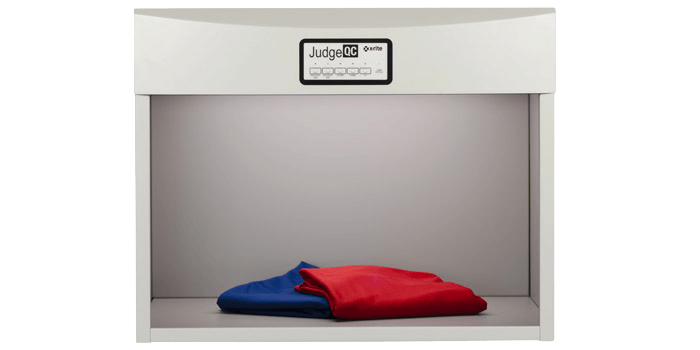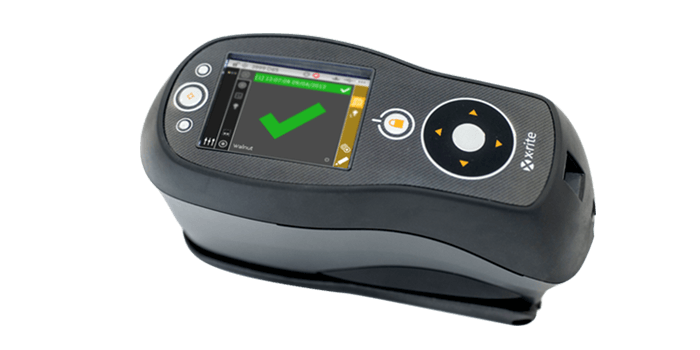Pantone®, an X-Rite company, recently announced a pair of complementary shades as its 2016 Color of the Year: PANTONE 15-3919 Serenity and PANTONE 13-1520 Rose Quartz.
The PANTONE Color of the Year announcement is always exciting because it sets the stage for upcoming trends. The Color of the Year selection process is very thoughtful and a lot of consideration is given to the color choices. To arrive at the selection each year, Leatrice Eiseman, Executive Director of the Pantone Color Institute, leads the team involved in the selection of the Pantone Color of the Year. The color expert team is actively on the lookout for a color they see as ascending and seems to be building in importance… a shade they think has the ability to communicate the color message that best reflects what is taking place in our culture at a particular moment in time. Influences can come from the entertainment industry, travel destinations, lifestyles, fashion, and travel; as well as from the technology, materials, and textures that impact color.
The PANTONE Color of the Year choice is meant to be a reflection of our current mood and what is happening around the world, and it certainly gets everyone talking about color. The impact is broad and spans many industries. From fashion to home goods to cosmetics, many manufacturers are now scrambling to infuse Serenity and Rose Quartz into their product lines… as quickly as possible.
However, introducing new colors into production doesn’t just happen. It’s a complicated process, and it takes a long time. Manufacturers who have a reliable color-managed workflow in place are at a significant advantage because they can respond more quickly than those who do not.
We understand the challenge of staying current with color trends, so we’re sharing five color management tips to help you improve time to market and achieve new colors – like Rose Quartz and Serenity – in production.
-
Invest in and maintain your technology.
To manage and achieve the right color in production, you need the right tools. Yes, it’s an investment, but the payoff from improved color consistency, streamlined quality control, and reduced waste and rework will come fast. The key is to get color right the first time, and there are a number of technologies that can help.
Using a color measurement device like a spectrophotometer throughout the production process will ensure that your color remains on target and help you catch expensive mistakes before an entire batch is wasted. The resulting spectral color information will also help you better communicate with the client or supplier. If everyone is speaking the same color language, there are no surprises. This is especially important when trying to meet your customers’ increasingly stringent tolerances and requests for new and trending colors like the PANTONE Color of the Year.
A light booth is another important tool for any color workflow. Evaluating color under controlled lighting conditions will reduce rejected products by ensuring that color looks right when it reaches its final destination, not just in your factory.
Once you invest in color management tools, you need to perform regular cleaning and calibration to ensure that they remain in tip-top condition. And just like everything else, color measurement technology continues to improve. Staying current with the latest tools and techniques for measuring, monitoring, and managing color will better assure consistency and accuracy in color through the entire supply chain.
-
Start color management early in the production process.
Do you provide clear guidance as to what you expect from your suppliers? Do you assume the raw materials they send are within specification when they arrive? Even trusted suppliers can make mistakes, and those mistakes will end up costing YOU money.
To improve the quality and reliability of incoming materials, you need to provide your suppliers with clear and specific instructions. You should also measure everything that comes in to ensure that incoming materials are right. Then you have the option of rejecting these materials, or reformulating to achieve the right color – before a problem occurs. Either way, it’s less expensive than going into production with incorrect color and trying to make it right later.
-
Go digital.
One of the primary reasons color is hard to reproduce is because it’s so subjective. When a customer asks for light blue, what does that mean? Does it mean Serenity, one of the new pair of PANTONE Color of the Year? Or does it mean something entirely different? Spectral values cannot be misinterpreted.
There are a number of new tools for communicating color spectrally. For the packaging industry, PantoneLIVE removes subjectivity and eliminates variability by digitizing color. PantoneLIVE gives you, and all of your suppliers, access to a secure cloud-based library of achievable color standards. Each person involved in the manufacturing of your product – from design, to formulation, to production and quality control – can access and work from the same color data. This means fewer errors and less rework to get the color right.
Remember when I mentioned your suppliers? Communicating color digitally is also a great way to ensure that you will receive what you expect from them.

-
Let software do the hard work.
Did you know that even the most reliable instruments can move out of spec over time? Or that you can get slightly different color numbers from two instruments, even if they’re from the same manufacturer? Many errors in color management can be corrected by calibrating and profiling, and NetProfiler 3 makes it easy for even the largest fleet of instruments to be aligned with one another.
NetProfiler is a cloud-based blend of software and color standards that helps mitigate inaccurate color during production by verifying, optimizing, and certifying the performance of all of your color measurement devices. With very little downtime – only a few minutes a month – you can bring your devices back into tolerance (or be alerted that they need service) and certify their accuracy. Not only does this provide peace of mind that your spectral data is accurate and consistent across your entire base of instruments, but if a customer ever questions your color, you have proof that it’s within tolerance.
NetProfiler is a handy tool for standardizing your color management workflow because it ensures consistency of color data for applications such as color formulation, ink formulation, color quality control and spot color reproduction. It can even troubleshoot where color errors occurred so that you can pinpoint exactly where things went wrong. When tolerances are tight and there’s little room – or time – for error, NetProfiler can help you speed time to market and respond quickly to new color requirements.
-
Get certified.
Whether you’re an auto mechanic, a nurse, or a legal professional, certification tells the world that you’re properly trained and know what you’re doing. It works the same in our industry. Being certified proves that your company and staff are process oriented and able to match any color that is thrown your way. It will also help you get new business.
A key step in certification is documenting the entire color production process into standard operating procedures, then training everyone involved to follow them. It’s a simple fact… if everyone does the same thing the same way, color consistency and quality will be improved. Certification also addresses ISO standards to ensure you’re following industry guidelines.
Conclusion
Many manufacturers from apparel and footwear, to appliances, home goods and construction, readily admit they have trouble getting color right in production but don’t know how to fix it. Others think their color process is fine, until they have to match a stricter-than-usual customer requirement. Getting color right can be hard, but it doesn’t have to be. You just need the right tools and a solid, process-oriented workflow.
Not sure what you need? X-Rite will come to your site to audit your processes, then provide custom guidance, whether it be training or certification, to help you implement the best possible color-managed workflow and achieve results that exceed expectations. When time to market is important, having a color managed workflow process in place is just what you need.
Featured Color Management Solutions
Learn more about these featured products:

Judge QC
This affordable, durable light booth has 5 light sources for accurate evaluation of color under controlled lighting conditions for print, packaging and industrial applications.
Ci64
The Ci64, X-Rite’s most precise handheld sphere spectrophotometer, is available in three models: with simultaneous SPIN/SPEX, correlated gloss, and a UV option.



